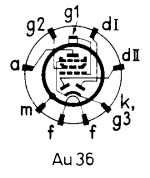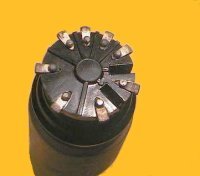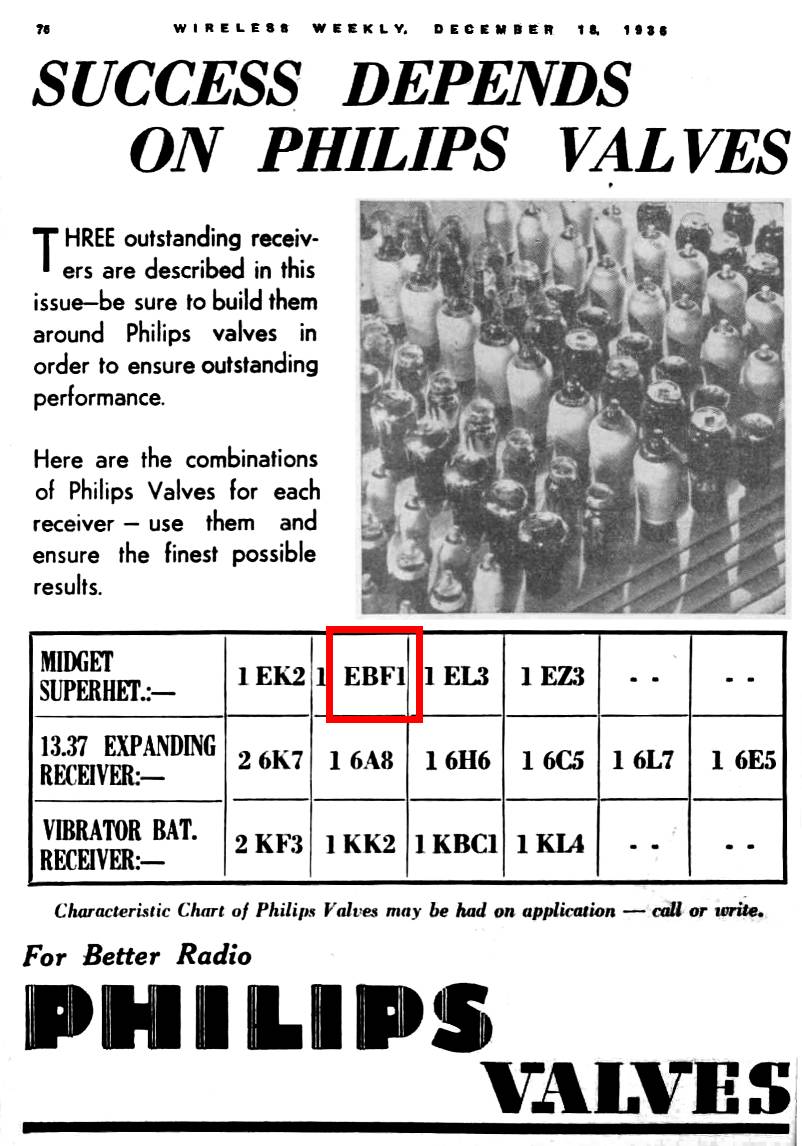
EBF1
|
|
|||||||||||||||||||||||||||||||||||||||||||||
|
Entradas: 1762 Réplicas: 0
Origin and release date of the EBF1
|
|
|
Jacob Roschy
13.Dec.18 |
1
According to RM member Gary Cowans the earliest proof of the EBF1 is found in the Australian receiver “Tasma Tiger 345”, which appeared in an advert from “The Courier-Mail” (Qld.) Oct 9, 1936, page 17. Its the first receiver which has the EBF1 in its valve lineup. According to RM member Martin Kent the Tasma Tiger & Democrat radios were both released in September 1936.
Another early proof of the EBF1 is a Philips advert in a 18th of December 1936 issue of Wireless Weekly. Since the first appearance of the EBF1 in Europe was not before February 1937, the EBF1 is most likely an “invention” of Philips-Australia. However, the EBF1 was not a particularly ingenious design. It's simply a 6B7, fitted with a P8 side contact base and painted red. The ST12 bulb and the heater current 0.3 A fits most to American standards, but not so to the Philips red series.
The picture clearly shows the origin of the EBF1 from the 6B7. The EBF1 is the only valve in the Philips red series with an American ST12 bulb and a heater current of 0.3 A, as it's just a rebased 6B7. The EBF2 from 1938 however has the bulb size and shape of the Philips red series, as well a heater current of 0.2 A, which also is typically for the Philips red series.
Here is shown an excerpt of a valve data list of Philips France to compare the EBF1 with the 6B7. Since the 6B7 data are only shown for 100 V screen voltage, the data for the 6B8G are added, which is electrically identical. Probably to disguise the relationship of the EBF1 to the 6B7 and 6B8G, the values of Ia (anode current) and S (gm) are slightly different, with Ia = 9 mA vs. 10 mA, S = 1.1 vs. 1.3 mA/V. Jacob Anexos
|
Fin de las contribuciones al foro de válvula
| Cumplimiento de datos | Más información |








